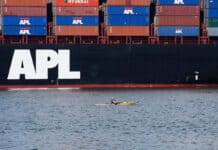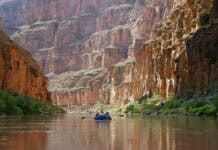Few feats of industrial wizardry have had a greater impact on paddlesports than waterproof-breathable dry wear. These revolutionary garments made year-round paddling a pleasure for the masses rather than a test for the masochistic few, thanks in large part to the extraordinary properties of per- and polyfluoroalkyl substances, or PFAS, a class of synthetic chemicals found in thousands of consumer products and linked to a long list of negative health effects.
Soon this magic ingredient will be banned from outdoor apparel in California, Washington, New York and more than a dozen other states. As the bans approach—the California law takes effect in January 2025 for outerwear, while extreme use garments including drysuits and drytops will have until 2027—paddlesports brands and their suppliers are working diligently to find suitable replacements.
Bracing for the coming PFAS ban
First out of the gate was Level Six, which introduced its PFAS-free Loki drysuit last September. After years of testing and development, Level Six CEO Stig Larsson is proud of the result. “People couldn’t believe that we had done it,” he says. “We ended up getting certifications along the entire process to prove that we actually are PFAS-free.”
Producing PFAS-free versions of products made with Gore-Tex and its many clones has been more challenging, because the fabric’s original formulation includes a Teflon mid-layer that’s not easily substituted. Gore had planned to transition its entire portfolio away from what it calls “PFCs of environmental concern” by late 2023 but has since pushed the target to the end of 2025 citing product development and scaling challenges.
Changing a decades-long industry standard is no easy task, says Danny Mongno, NRS product and field marketing manager, especially for paddlers who have come to expect a lot from their drysuits and drytops. “It’s far easier to replace the technology in a rain jacket, for example, but it’s a completely different and more challenging process to develop technology capable of withstanding more rugged and extensive full immersion.”
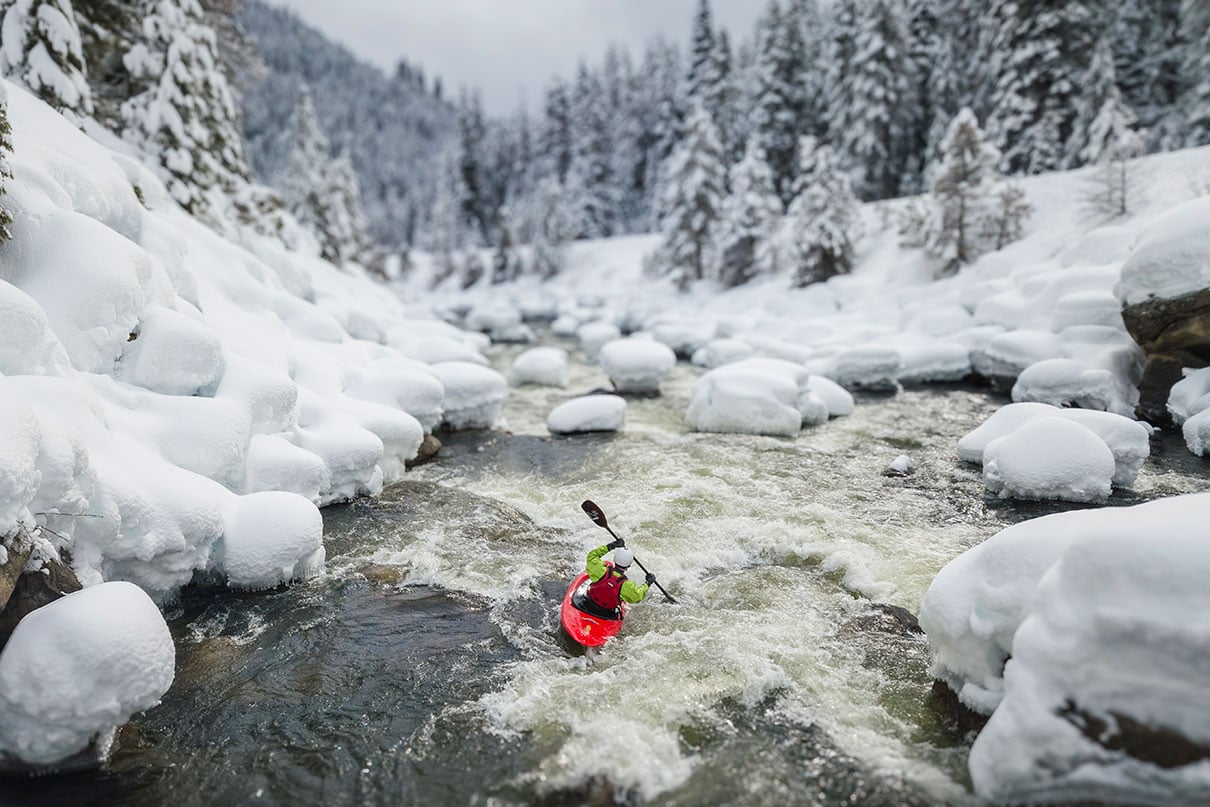
That’s precisely the argument Kokatat’s then-CEO Jeff Turner and the California Outdoor Recreation Partnership brought to the legislative sponsor of the California ban last year. The coalition of outdoor companies made clear that they supported the bill’s overall goal but would need more time to bring out PFAS-free gear that was equal to the most demanding conditions. As a result of the lobbying effort, California’s ban on PFAS in extreme use garments including drywear was pushed back to January 2027.
A full list of current and pending PFAS legislation is beyond the scope of this article, but it’s likely that the patchwork of state prohibitions will effectively become a blanket ban everywhere in North America. Even if manufacturers had a perfect understanding of the regulatory environment, it simply wouldn’t make sense to maintain multiple supply chains. That effort is better spent creating viable alternatives.
“Paddling gear is probably some of the most abused equipment in the world.”
—Stig Larsson, Level Six
“To be able to seamlessly transition product lines away from using PFAS while also ensuring customers have the product available when they want it, at a competitive price will be a tricky rapid to navigate, but we’re more than up for the challenge,” says Jordan Jones, Kokatat director of plant operations.
Breaking the chain
PFAS are integral to two components of most waterproof-breathable outerwear. One is the membrane within the fabric itself. The other is in the durable water repellent (DWR) applied to the garment. These two elements plus the characteristics of the woven fabric work together to keep paddlers dry and comfortable on the water.
Until 2016 the gold-standard DWR was C8, so named for its eight-link fluorocarbon chain. The industry has since moved to less-harmful C6 and C4 treatments, as well as so-called C0 DWRs that contain no fluorocarbon chemistry.
Managing the transition to C0 is something of a balancing act. NRS says it is moving to a C0 PFAS-free treatment on appropriate products while sticking with C6 treatments where needed to meet performance requirements. Kokatat has taken a similar approach. Immersion Research President John Weld says his company has gone to a C0 DWR this year and its fabrics are also fluorocarbon-free according to the supplier. Weld hasn’t paid for testing. “What company in our realm has the ability to identify where PFAS exists?” he says. “None of us could ever guarantee.”
Certification adds one more layer of difficulty to the PFAS-free transition, but the biggest challenge remains the demands of the sport. “Paddling gear is probably some of the most abused equipment in the world,” Larsson says. “Think about paddling on a salty ocean or paddling the canyon with a lot of sediment. That sediment gets into the fabric and breaks down the protective layer that causes water to bead up and not saturate the outer fabric.”
Consumers must adapt, too
The solution to this problem is not another high-tech miracle fabric. It’s regular care and more frequent re-treatment with a PFAS-free DWR such as McNett ReviveX. For retailers and brands, the coming bans are an opportunity to educate customers on the nuances of technical paddling gear in a PFAS-free era, as well as the care and maintenance needed to keep it performing at its best.
In the meantime, manufacturers will do everything they can to deliver the performance customers have come to expect. “We know what our customers want. I have to sell a drysuit that meets our current standard,” Weld says. “For the amount of money we charge for these things, I can’t do anything less.”
If this looks like fun, you own a waterproof-breathable drysuit. | Feature photo: John Webster



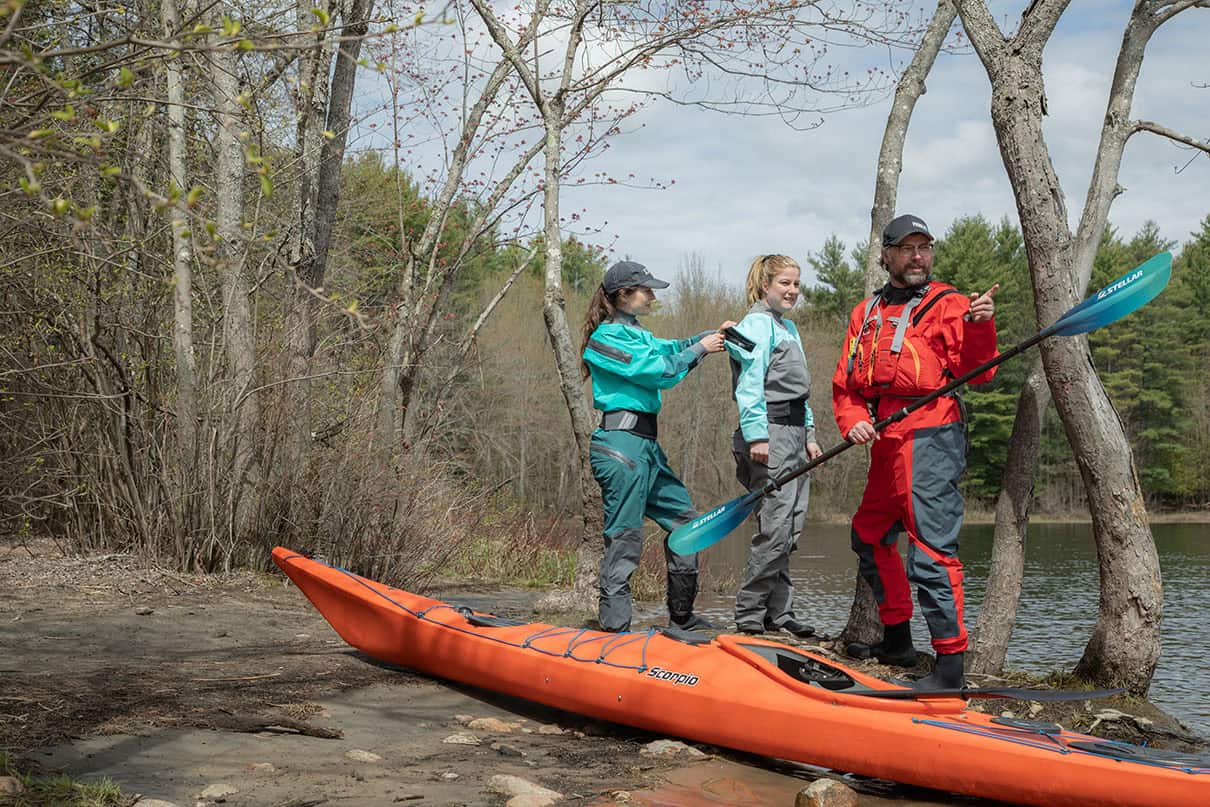
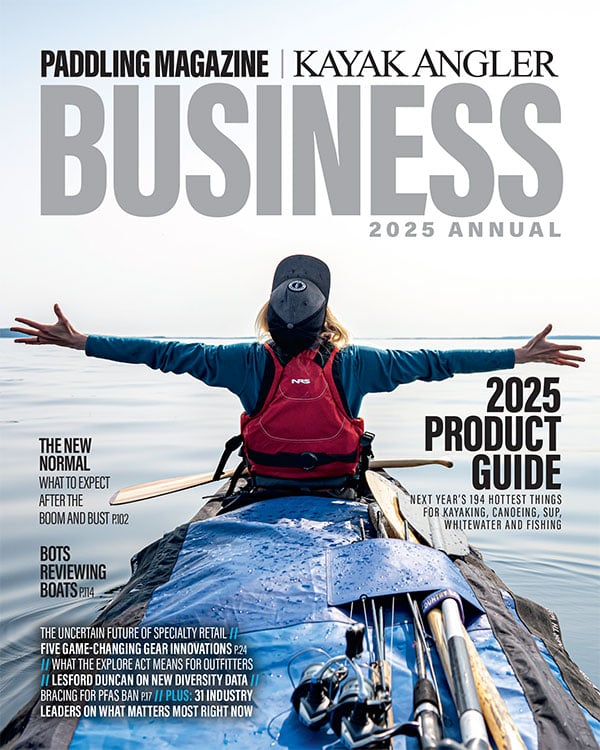 This article was first published in the 2024 issue of Paddling Business.
This article was first published in the 2024 issue of Paddling Business. 